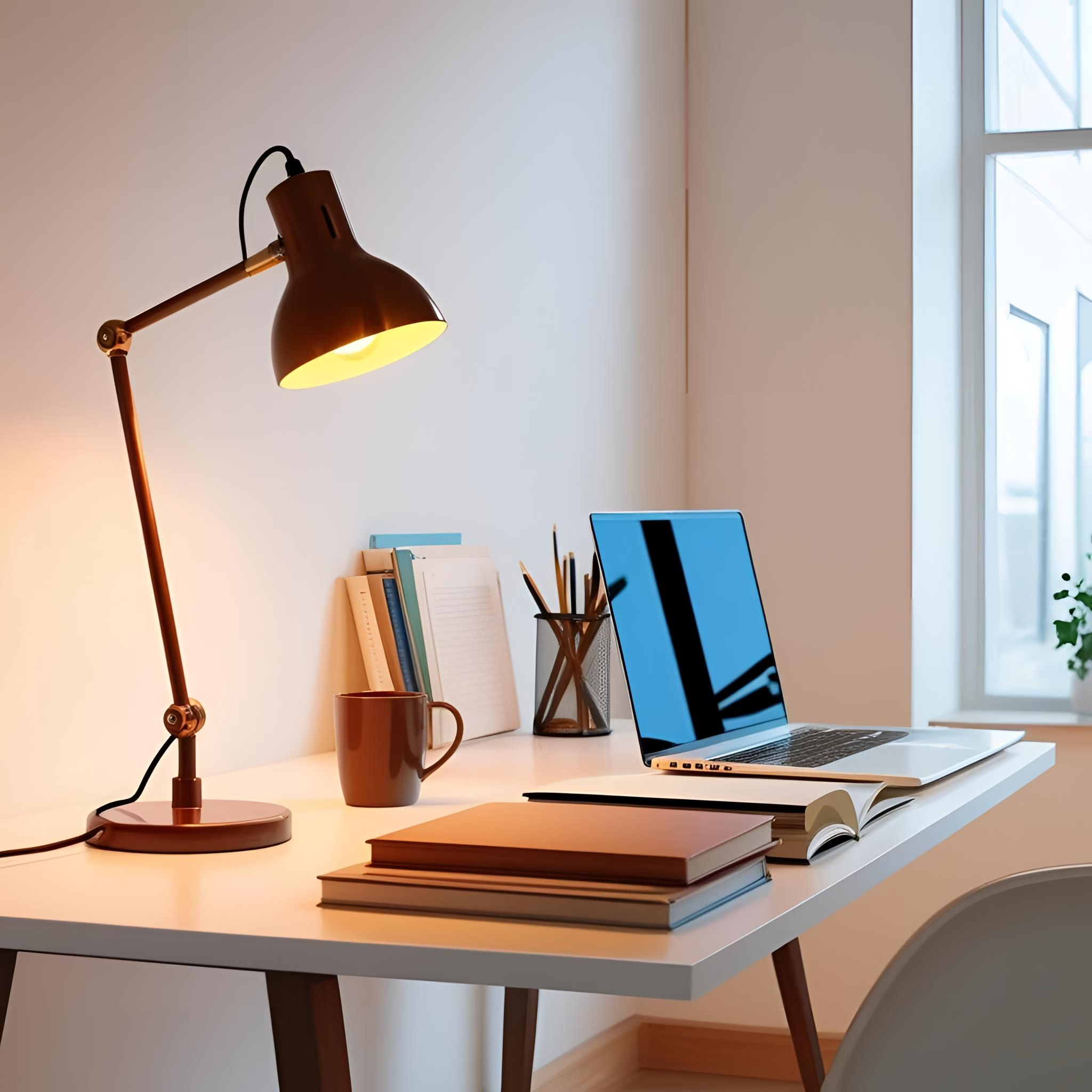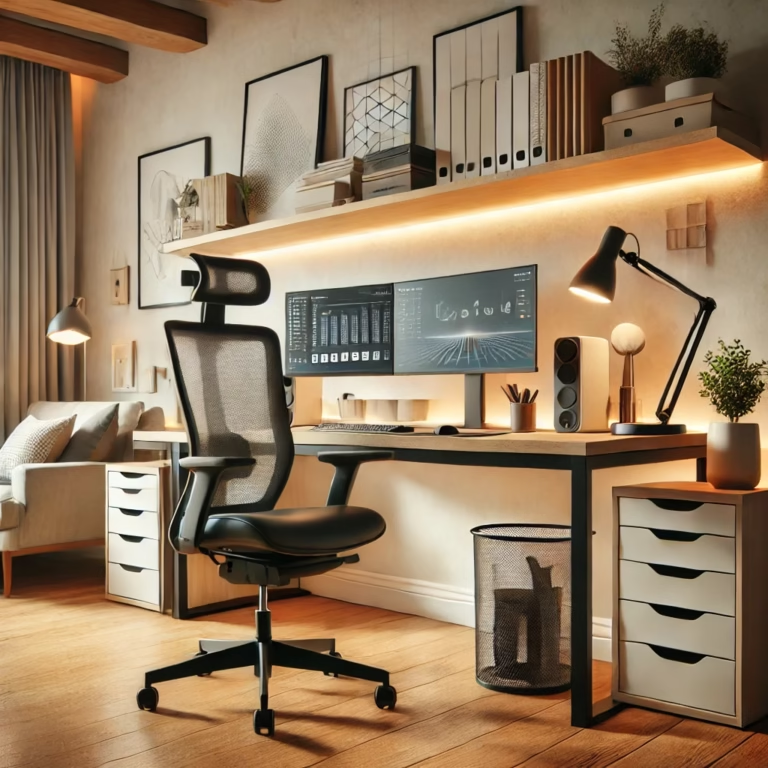Task Lighting: Illuminate Your Workspace for Better Focus and Productivity
Have you ever struggled to read a document or complete a detailed task because the lighting in your workspace was too dim or too harsh? Task lighting is the solution to this common problem. Designed to provide focused illumination for specific activities, task lighting ensures that your workspace is both functional and comfortable. Whether you’re reading, writing, or working on a computer, the right task lighting can make all the difference. In this guide, we’ll explore the benefits of task lighting, the different types available, and how to choose the best lighting for your needs.
What is Task Lighting?
Task lighting is a type of lighting designed to illuminate a specific area where detailed tasks are performed. Unlike ambient lighting, which provides general illumination for an entire room, task lighting is focused and directional, ensuring that you have enough light to work efficiently without straining your eyes. Common examples include desk lamps, under-cabinet lights, and reading lights.
Why Task Lighting Matters
Proper lighting is essential for maintaining focus, reducing eye strain, and preventing fatigue. According to a study published in the Journal of Occupational and Environmental Medicine, inadequate lighting in the workplace can lead to a 30% increase in errors and a 25% reduction in productivity (Boyce et al., 2012). Task lighting addresses these issues by providing targeted illumination that enhances visibility and comfort.

Benefits of Task Lighting
1. Reduces Eye Strain and Fatigue
One of the primary benefits of task lighting is its ability to reduce eye strain. When working on detailed tasks, such as reading or crafting, insufficient lighting can force your eyes to work harder, leading to discomfort and fatigue. A study in the Journal of Environmental Psychology found that proper task lighting can reduce eye strain by up to 50% (Vohs et al., 2017).
2. Improves Focus and Productivity
Task lighting helps you stay focused by eliminating shadows and glare, which can be distracting. A well-lit workspace allows you to concentrate on the task at hand, improving both accuracy and efficiency. Research by the Lighting Research Center found that workers with adequate task lighting were 20% more productive than those without (LRC, 2015).
3. Enhances Visual Comfort
Task lighting provides a comfortable level of brightness that is tailored to your specific needs. Unlike harsh overhead lights, task lighting can be adjusted to suit your preferences, creating a more pleasant and inviting workspace.
4. Supports Ergonomic Health
Proper lighting is an essential component of ergonomic design. By reducing the need to squint or strain your eyes, task lighting helps prevent headaches, neck pain, and other discomforts associated with poor lighting conditions.

Types of Task Lighting
There are several types of task lighting, each designed for specific activities and settings. Here’s a breakdown of the most common options:
1. Desk Lamps
Desk lamps are the most popular type of task lighting. They are versatile, portable, and can be adjusted to provide the perfect amount of light for reading, writing, or working on a computer. Look for lamps with adjustable arms and brightness settings for maximum flexibility.
2. Under-Cabinet Lighting
Under-cabinet lighting is ideal for kitchens, workshops, and other spaces where you need focused light on a countertop or work surface. These lights are typically installed underneath cabinets or shelves and provide bright, shadow-free illumination.
3. Clip-On Lights
Clip-on lights are small, portable lights that can be attached to books, desks, or headboards. They are perfect for reading in bed or working in tight spaces where a traditional lamp won’t fit.
4. Floor Lamps with Adjustable Heads
Floor lamps with adjustable heads are a great option for larger workspaces. They provide focused light where you need it and can be easily repositioned as your tasks change.
5. Pendant Lights
Pendant lights are suspended from the ceiling and provide focused light over a specific area, such as a dining table or kitchen island. They are both functional and stylish, making them a popular choice for modern workspaces.

How to Choose the Right Task Lighting
Selecting the right task lighting depends on your specific needs and workspace. Here are some factors to consider:
1. Brightness and Color Temperature
Choose a light with adjustable brightness and color temperature settings. For tasks that require focus, such as reading or writing, a cooler color temperature (4000K-5000K) is ideal. For a more relaxed atmosphere, opt for warmer tones (2700K-3000K).
2. Adjustability
Look for task lights with adjustable arms, heads, or bases. This allows you to direct the light exactly where you need it, reducing shadows and glare.
3. Energy Efficiency
Opt for LED task lights, which are energy-efficient and long-lasting. LEDs also produce less heat, making them safer and more comfortable to use for extended periods.
4. Style and Design
Task lighting doesn’t have to be purely functional—it can also enhance the aesthetics of your workspace. Choose a design that complements your decor and personal style.

Tips for Using Task Lighting Effectively
1. Position the Light Correctly
Place your task light so that it illuminates your work area without causing glare or shadows. For right-handed users, position the light on the left side, and vice versa.
2. Combine Task and Ambient Lighting
Use task lighting in conjunction with ambient lighting to create a balanced and comfortable workspace. This helps reduce contrast between the lit and unlit areas of the room.
3. Avoid Overhead Lighting Alone
Overhead lighting can create shadows and glare, making it difficult to see detailed tasks. Always supplement overhead lights with task lighting for optimal visibility.
4. Take Breaks to Rest Your Eyes
Even with proper task lighting, it’s important to give your eyes a break. Follow the 20-20-20 rule: every 20 minutes, look at something 20 feet away for 20 seconds.
Conclusion
Task lighting is a simple yet powerful way to enhance your workspace. By providing focused illumination for specific tasks, it reduces eye strain, improves productivity, and creates a more comfortable and efficient work environment. Whether you’re reading, writing, or working on a computer, the right task lighting can make all the difference.
Ready to upgrade your workspace? Start exploring task lighting options today and experience the benefits for yourself!
References
- Boyce, P. R., Veitch, J. A., Newsham, G. R., Jones, C. C., Heerwagen, J., Myer, M., & Hunter, C. M. (2012). Impact of lighting on workplace performance. Journal of Occupational and Environmental Medicine, 54(7), 801-809. Link
- Vohs, K. D., Redden, J. P., & Rahinel, R. (2017). Physical order produces healthy choices, generosity, and conventionality, whereas disorder produces creativity. Journal of Environmental Psychology, 49, 1-8. Link
- Lighting Research Center (LRC). (2015). The impact of lighting on workplace productivity. Link







